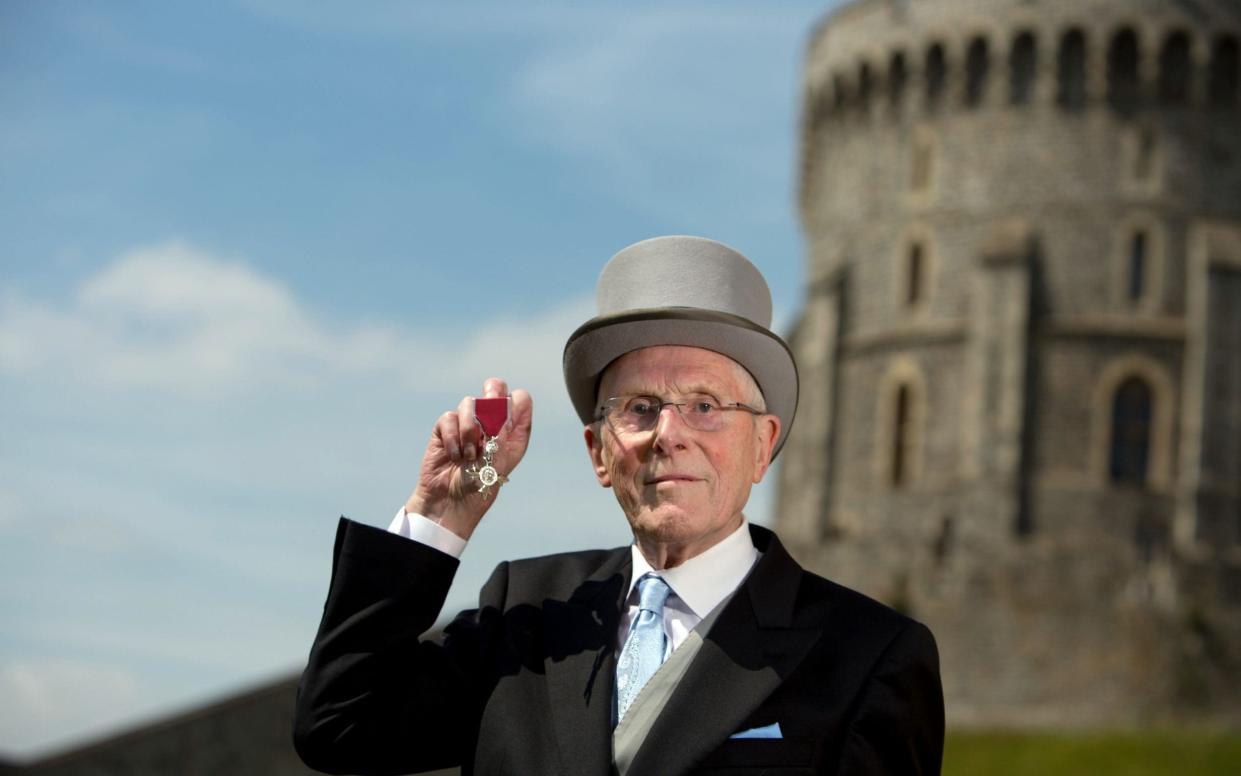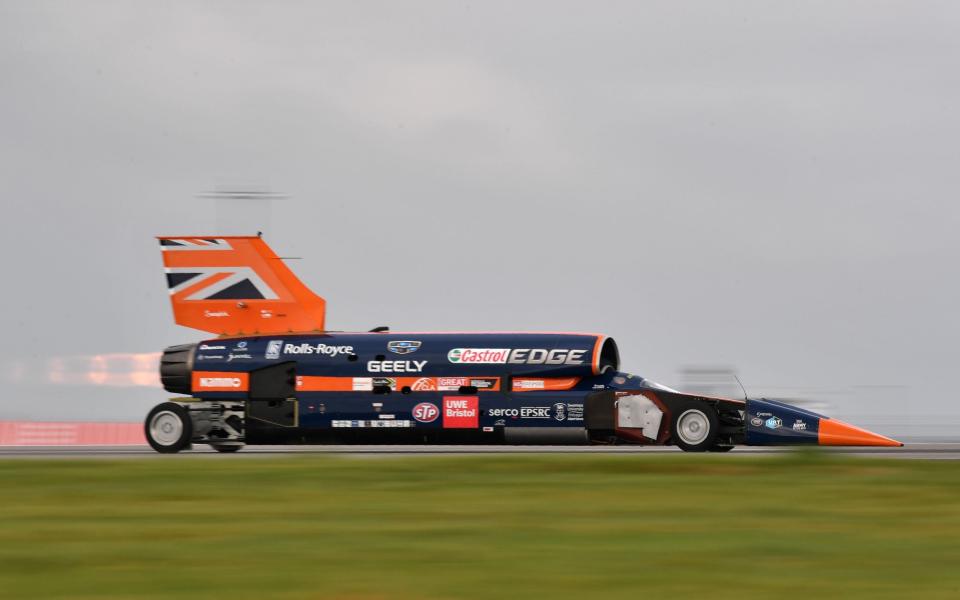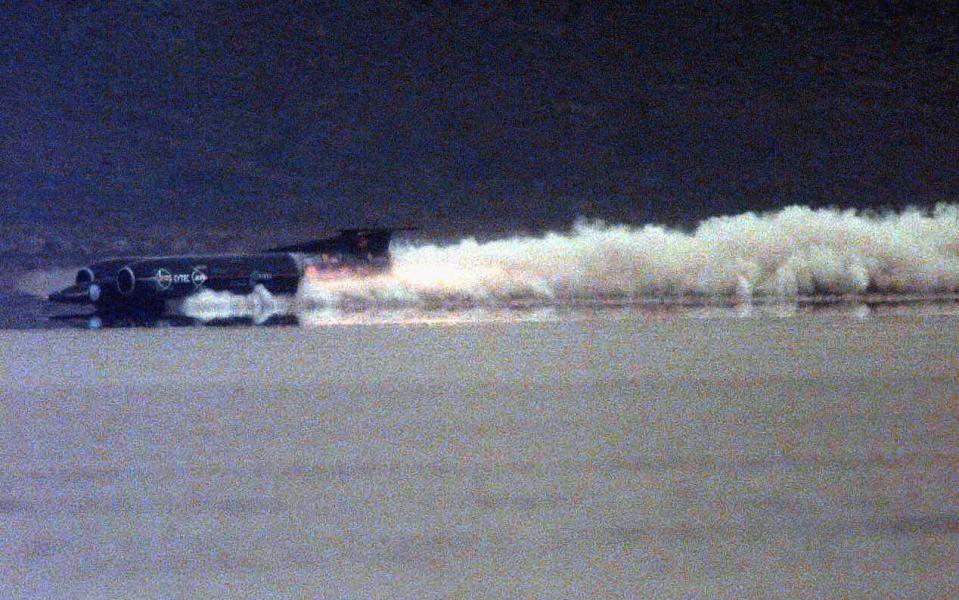Ron Ayers, aerodynamicist who helped design the land-speed record holder Thrust SSC – obituary

- Oops!Something went wrong.Please try again later.
- Oops!Something went wrong.Please try again later.
- Oops!Something went wrong.Please try again later.
Ron Ayers, who has died aged 92, was an aerodynamicist who worked on Britain’s supersonic missile programme in the 1950s, then found a second career in his retirement designing land-speed record cars.
These included Thrust SSC, the vehicle which, driven by Squadron Leader Andy Green on October 15 1997, achieved a speed of 763 mph, setting the current land-speed-record and becoming the first and only land vehicle to break the sound barrier.
Initial runs for the 110,000 bhp, 10.5 tonne, 16.5 metre-long car at Black Rock desert in Nevada proved its potential, but it was not fast enough to convincingly beat the then record of 634.051 mph set by Richard Noble in Thrust 2 at Black Rock in October 1983.
“I looked up at the sky when the car had passed and saw that the desert had literally exploded behind the car and was obscuring the sun,” Ayers recalled. Reasoning that Thrust SSC was trying to dig itself into the dirt, sapping power and stability, Ayers, an old-school engineer who was often to be found with an old-fashioned maths pad and slide rule, did his calculations and the team adjusted the car’s aerodynamic centre of pressure to enable Green to do his record-breaking run.
The record, which still stands today, was 130mph faster than Noble’s previous record and was set 50 years and one day after Chuck Yeager had first exceeded the sound barrier in aerial flight. The sonic boom could be heard from 20 miles away.

Ronald Frederick Ayers was born in Westminster on April 11 1932, the only child of Frederick Ayers, an engineer, and Maud, née Jardine. Ron’s childhood and schooling was disrupted by long periods in hospital with mastoid infections. With the advent of penicillin, he recovered and belatedly resumed his education.
In 1940, his father’s factory in Kilburn was destroyed in an air raid and the family were evacuated to Barnstaple, Devon, where the factory reopened. Initially Ron struggled at school, but he gradually showed his gifts for mathematics and physical sciences.
As an apprentice at the aircraft manufacturer Handley Page, he worked on the Victor bomber and Hastings transport aircraft, and studied on day release for an engineering degree at Northampton Polytechnic (now part of City University). He won the chairman’s prize for top apprentice five years out of six, before being awarded a scholarship to study for a Master’s at Cranfield. On graduation he had the pick of jobs at the great British aircraft companies.
Moving to the Bristol Aircraft Company (now part of BAe Systems), he thrived and was promoted to chief aerodynamicist of the Guided Weapons Division, working on the Bloodhound and Rapier anti-aircraft missiles, and becoming the leading expert in supersonic and high-altitude vehicles. He studied the nascent science of operational research and subsequently became head of management services at BAC.
In 1968 he left aerospace and moved to London to run the family printing-machine business Adana, which was the leading hand-printing press manufacturer. This was a major change for Ayers, but he was soon busy travelling the world to build up export markets.
Adana was sold in 1988, leaving Ayers effectively retired. Knowing that her husband would need something to occupy his mind, his wife Irene mentioned that they were renovating part of the famous pre-war Brooklands track, which was the site of many British automotive and aircraft engineering firsts, and suggested he should get involved with Brooklands as a volunteer.

Ayers busied himself with sorting through a vast archive of papers at Brooklands. These included wind-tunnel data from many of the famous land-speed-record cars such as Golden Arrow, Bluebird and Railton.
As he delved further, Ayers plotted the expected versus actual speed of the cars and reasoned that the power-sapping role of rolling resistance of the sand – and spray drag where the car is throwing up debris – was significantly higher than had been predicted.
He was on his way to discuss this with Ken Norris, the “godfather” of British land- and water-speed record-breaking, when he bumped into the then land-speed record holder Richard Noble.
Noble told him that the American Craig Breedlove (the first person to break the 400, 500 and 600mph “barriers”) was building a car to set a new world record – and potentially go supersonic, and suggested that he and Ayers get together to build a project to retain the record.
Ayers’s initial reaction was that running a car at supersonic speeds at ground level was a stupid idea. “Don’t be an idiot, you’ll kill yourself,” he told Noble. However, after several weeks’ thought Ayers began to feel there might be solutions to the problems. Thrust SSC was born.
Ayers’s subsequent “retirement” projects included designing the Farnborough F1 aircraft and the JCB Dieselmax that took the land-speed diesel vehicle record from 200 mph to 350 mph. He then embarked on designing a new car with the aim of setting a new land-speed record in excess of 1,000 mph.
In 2019, aged 87, Ayers was present at Hakskeen Pan in South Africa when Bloodhound SSC, as the car was named, driven by Andy Green, did high-speed test runs to 600 mph plus. It never achieved its target speed, however, and now resides at Coventry Transport Museum.
Ayers was a fount of knowledge for speed-record teams and had a passion for educating young engineers and technicians. He delivered more than 800 talks to schools, colleges and engineering establishments around the world, culminating in his final talk, aged 90, at the school attended by his two granddaughters in Caterham.
In 2014 he was appointed MBE.
Ayers’s wife Irene died in 1991. Their son survives him.
Ronald Ayers, born April 11 1932, died May 29 2024

